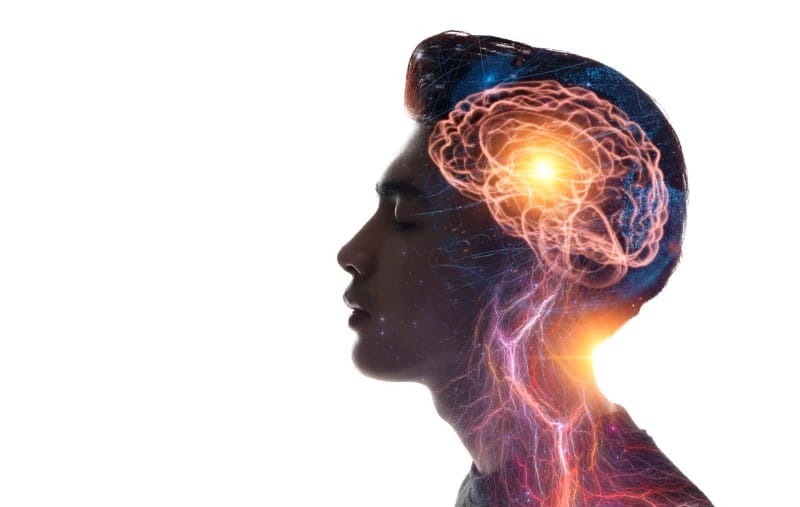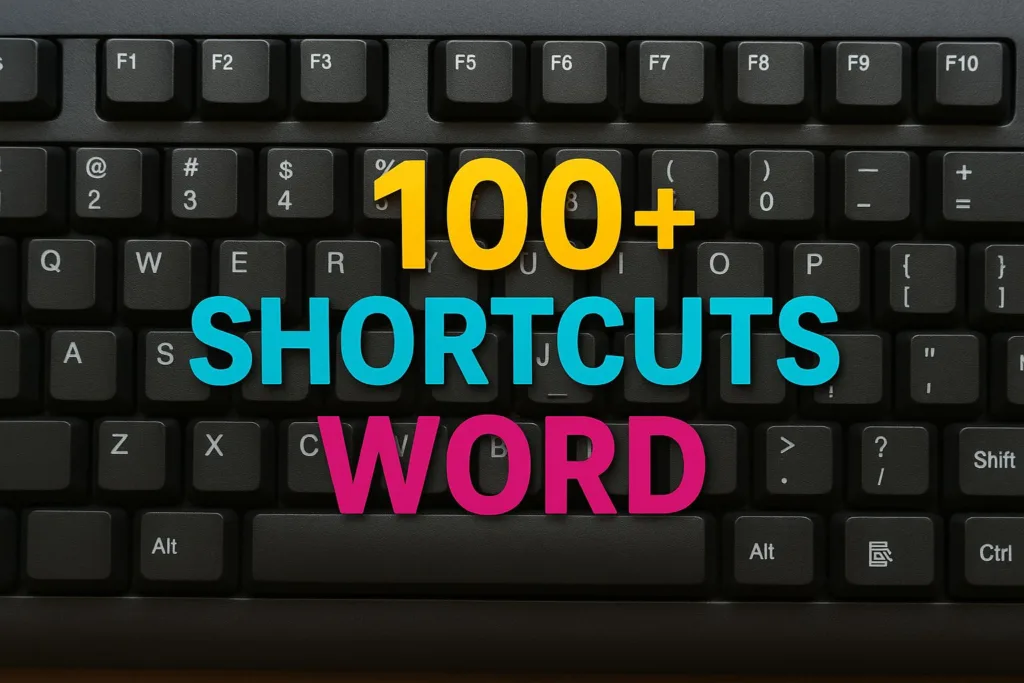What is the real cause of the dissatisfaction and digital addiction that plagues many people?? The answer may lie in the conditions excess dopamine.
Think of dopamine asnavigator in your brain. His job is to give signals, “This is good, repeat again!” every time you do something fun or useful.
However, in the modern era, navigator naturally this is very easyhijacked. Social media and pornography offers instant triggering stimulationdopamine production unreasonably, disrupts the brain's reward system. Causes of excess dopamine This is what then gives rise to various danger And symptom disturbing—ranging from loss of motivation to anxiety—which we will discuss in detail in this article.
List of contents
What is Dopamine?
Dopamine is a hormone and a kindneurotransmitter, or chemical messengers, which is produced in the brain. The nervous system uses it to send messages between nerve cells. These messages also travel between the brain and the rest of the human body.
This unique neurotransmitter affects the body, brain, and human behavior. Dopamine plays a role in how a person feels pleasure and reward. Dopamine is an important part of humans' unique ability to think and plan. Dopamine helps us focus, work to achieve goals, and find interesting things.
Imagine if you just won a prize or achieved something great, your brain is flooded with dopamine, gives a feeling of satisfaction and happiness. It makes you motivated to repeat the same thing because it makes you happy.
Understand “Dopamin Rush” and Modern Addiction
Dopamine does more than just make you feel happy, but rather creates feelings want to And enthusiasm that motivates you to act. This is a very powerful brain motivation system.
Mechanism of Action of Dopamine:
- Trigger (Trigger): You see notifications from social media or open pornographic sites.
- Action (Action): You swipe the screen (scroll) or watch.
- Gift (Reward): The brain releases dopamine, creates a sensation of pleasure and satisfaction.
- Repetition (Repetition): Because I feel happy, You repeat the behavior. Each time repeated, Neural circuits in the brain become stronger.
Social media and pornography are“supernormal stimulus”—stimuli designed in such a way that they are far more powerful and intense than the natural stimuli the human brain has encountered throughout evolution. A like, comment, or short videos provide “puncture” small dopamine that is fast and can be repeated endlessly.
Likewise, pornography provides intense and unlimited visual and sexual stimulation, floods the brain with dopamine in much higher levels than natural sexual activity.
Baca selengkapnya The influence of digital technology on human cognition.
How Social Media and Porn Create a Dopamine Overload
A. The Role of Social Media:
- Addictive Design: Features likeinfinite scroll (infinite scrolling), notification, and the unexpected variety content creates “fun loop” that keeps you coming back. Former Google ethics designer, Tristan Harris, often warns of how technology is designed to manipulate our attention [1].
- Instant Social Validation: Every like, comment, and shares are a form of micro social validation that triggers the release of dopamine. A study inPsychological Science shows that getting “likes” on social media activates the same brain circuits as eating chocolate or winning money [2].
- Fear of Missing Out (FOMO): This feeling creates anxiety which actually encourages you to keep checking social media to relieve it, and every time you check, You get a little “dose” dopamine.
B. The Role of Pornography:
- Unlimited Access and Extreme Variety: The internet provides access to diverse and new sexual stimulation just a click away. Every new piece of content sparks curiosity and anticipation, which releases dopamine. Neurologist Dr. Andrew Huberman explains that pornography is one of the strongest dopamine stimuli outside of illegal drugs [3].
- Decreased Dopamine Receptor Sensitivity: When the brain is constantly bombarded by high levels of dopamine from these supernormal stimuli, Dopamine receptors in the brain become less sensitive. As a result, You need more extreme content, longer, or more often to feel the same level of satisfaction. This is what is calledtolerance, a phenomenon that also occurs in substance addiction and has been observed in research on behavioral addictions [4].
Dangers and Negative Impacts of Excess Dopamine
When the dopamine circuit is constantly overstimulated, some serious problems may arise:
- Dopamine Resistance (Tolerance):
As explained, You will need “dose” higher to feel happy. This makes it a real life activity—like reading a book, talk to friends, or getting work done—feels boring and unsatisfying. You lose motivation for things that require effort. - Motivation and Concentration Disorders (Anhedonia):
Because your pleasure threshold is already very high, You may feel apathetic, sluggish, and not interested in hobbies or long-term goals. Focus and attention will also be disturbed because the brain is used to fast stimulation. This condition is associated with dysregulation of the mesolimbic dopamine system [5]. - Anxiety and Mood Disorders:
After “dopamin rush” subsided, often followed by a feeling of emptiness, guilty, or anxious. This drastic up-and-down cycle of dopamine can contribute to increased stress, emergency, and even symptoms of depression. A study published inJAMA Psychiatry found a correlation between high social media use and increased depressive symptoms [6]. - Sleep Disorders:
Blue light from devices and mental stimulation from consumed content can interfere with melatonin production, hormone that regulates sleep. Lack of sleep will further worsen dopamine regulation and overall mental health [7]. - Impact on Social and Sexual Relationships:
- Social media: Can reduce the quality of face-to-face interactions and trigger unhealthy social comparisons.
- Pornography: Can create unrealistic expectations about sex and the body, causes dissatisfaction in intimate relationships with real-world partners, and has the potential to cause sexual dysfunction, as described in the literature review by Dr. Nicole Prause [8].
Steps to Reset Dopamine Balance
Reportedly, The brain has abilities calledneuroplastisitas—the ability to change and adapt. Here are the steps to “detox” dopamine and restore balance:
- Trigger Awareness and Identification: Note when and why you open social media or access pornography. Is it because you're bored?, stress, or lonely?
- Restrict Access: Use a time limiter app, disable notifications, or delete the app from your phone temporarily. Make access more difficult.
- Do “Fasting” Dopamine: Intentionally, reduce consumption of digital content and look for alternative activities that are healthier but still fun, like exercising, read a physical book, or learn new skills. This concept was popularized by Dr. Anna Lembke in her book, Dopamine Nation [9].
- Back to Natural Sources of Dopamine:
- Sport: Releases dopamine and endorphins naturally.
- Achieve Small Goals: Completing a task gives a sense of accomplishment that triggers healthy dopamine.
- Face-to-Face Social Interaction: Talk and laugh with other people.
- Listening to Music or Being Exposed to Sunlight.
- Be patient and realistic: This process takes time. Don't expect change overnight. The important thing is consistency.
The Effect of Meditation and Worship on Dopamine
1. The Effect of Meditation on Dopamine
Meditation, especially kindfocused-attention meditation (like mindfulness meditation), does not directly flood the brain with dopamine. Precisely, the influence is more onregulation and balancing system dopamine.
- Increases Dopamine Receptor Sensitivity: A famous study fromHarvard Medical School scanned the brains of meditators and found that meditation can increase the release of dopamine by up to 65%. However, which is important, This release occurs naturally and internally, not in response to an external stimulus “cheap”. This helps a person feel calm, alert, and satisfied without having to seek stimulation from the outside.
- Reduces External Dopamine Search: By training the brain to feel satisfied with the current situation, meditation reduces the need to constantly search “dopamin rush” from notifications, like, or explicit content. You become less reactive to external triggers.
- The Effect is Long Term and Stabilizing: Different from “spike” or a sharp, quickly-resolving dopamine spike from social media, the effects of meditation are persistent and stabilize the mood. You train your brain to generate feelings of calm and happiness from within, which is the opposite of the cycle “up and down” caused by addiction.
Conclusion for Meditation: Meditation doesn't make you “addicted” on feeling happy. On the contrary, constructive meditationinternal resilience and restore balance to your dopamine system, making you less dependent on external stimulation to feel happy.
2. The Effect of Worship on Dopamine
Worship is a complex activity and involves spiritual aspects, social, and psychological. The effects on dopamine are also multidimensional and very positive.
- Feelings of Calm and Surrender (Reduces Anxiety): When praying or meditating in the context of worship, the brain enters a state similar to meditation. This activity activates the parasympathetic nervous system (“rest and digest”) which is soothing, lowers cortisol (hormone stress), and creates a feeling of peace. In this state of calm, the dopamine system is not under stress or chaos.
- Feelings of Connection and Meaning: Worship, especially those done in congregation, sparking feelings of connection with the community and with the Almighty. Feeling loved, protected, and being part of something bigger is a source of deep satisfaction and meaning. This feeling is associated with the release of dopamine andoxytocin (social bonding hormone) that creates genuine and sustainable happiness.
- Calming Rituals and Repetition: Rituals in worship (like prayer movements, chanting a mantra, or pray) can have a meditative effect. This repetition provides structure, tranquility, and a sense of control, which is a stark contrast to the chaos and uncertainty that social media often creates.
- Spiritual Attainment (Internal Rewards): Completing a prayer service or feeling close to God provides a sense of accomplishment and fulfillmentinternal. This is “gift” that is not dependent on the validation of others (like likes on social media). This kind of spiritual achievement triggers a healthy release of dopamine and builds true self-esteem.
Conclusion

Dopamine is the brain's natural reward system designed to drive us to survive and thrive. However, of the digital era, we have created “opium” modern technology that hijacked this system. Social media and pornography, with a very addictive design, can cause excess dopamine which actually robs motivation, happiness, and our peace.
By understanding the mechanism, we can take conscious steps to take back control of our brains, resets its chemical balance, and rediscover more authentic and sustainable pleasure in real life.
Worship affects dopamine in a way thatconstructive and healthy. Instead of hijacking the brain's reward system like social media does, worship strengthens it with a source of deep satisfaction, mean, and sustainable—like a sense of peace, connectedness, and life goals.
A Quick Comparison: Healthy vs. Bad Dopamine. Not healthy
| Aspect | Social media / Pornography (Not healthy) | Meditation & Worship (Healthy) |
| Source | External, artificial, “cheap” | Internal, experience, authentic |
| by | Sharp spike (& then fall) | Stable and sustainable |
| Effects on Receptors | Lowers sensitivity (tolerance) | Increase sensitivity |
| Objective | Looking for instant pleasure (pleasure) | Looking for peace & meaning (contentment) |
| Long Term Impact | Addicted, emergency, from | Mental toughness, balance, life satisfaction |
Both meditation and worship are “antidote” which is very powerful against the harmful effects of dopamine overload due to social media and pornography. Neither of them “feed” your dopamine addiction, butretrain your nervous system to find satisfaction and peace from within oneself and through meaningful connections.
By incorporating these practices into your daily routine, You actively re-establish your brain's dopamine balance and avoid the dangers of dopamine overload. Making you more immune to the temptation of instant stimulation and more able to enjoy true happiness.
Find other interesting articles at Blog
Reference Sources
- [1] Harris, T. (n.d.). The Center for Humane Technology. Quoted from a public explanation regarding the design of manipulative technology.Humane Tech Website
- [2] Sherman, L. E., Payton, A. A., Hernandez, L. M., Greenfield, P. M., & Dapretto, M. (2016). The Power of the Like in Adolescence: Effects of Peer Influence on Neural and Behavioral Responses to Social Media.Psychological Science, 27(7), 1027–1035.
- [3] Huberman, A. (2021). Huberman Lab Podcast. “Controlling Your Dopamine For Motivation, Focus & Satisfaction.” [Podcast Transcript/Video].
- [4] Volkow, N. D., Wang, G. J., Fowler, J. S., & Tomasi, D. (2012). Addiction circuitry in the human brain.Annual Review of Pharmacology and Toxicology, 52, 321–336.
- [5] Treadway, M. T., & Zald, D. H. (2011). Reconsidering anhedonia in depression: Lessons from translational neuroscience.Neuroscience & Biobehavioral Reviews, 35(3), 537–555.
- [6] Primack, B. A., Shensa, A., Escobar-Viera, C. G., et al. (2017). Use of multiple social media platforms and symptoms of depression and anxiety: A nationally-representative study among U.S. young adults.JAMA Psychiatry, 74(10), 1021–1028.
- [7] Hale, L., & Guan, S. (2015). Screen time and sleep among school-aged children and adolescents: A systematic literature review.Sleep Medicine Reviews, 21, 50–58.
- [8] Prause, N., & Pfaus, J. (2015). Viewing sexual stimuli associated with greater sexual responsiveness, not erectile dysfunction.Sexual Medicine, 3(2), 90-98. (Although this topic is still debated, this review provides a perspective on psychophysiological impacts).
- [9] Lembke, A. (2021). Dopamine Nation: Finding Balance in the Age of Indulgence. Dutton.






terbaik dan sangat menarik,,dan semoga ada cerita dan artikel menarik lainnya terimakasih
I never thought about how the overstimulation from social media might be literally rewiring our brains. I agree that resetting dopamine balance through meditation and worship could be key in addressing this, though I wonder how long it takes to really notice the benefits.